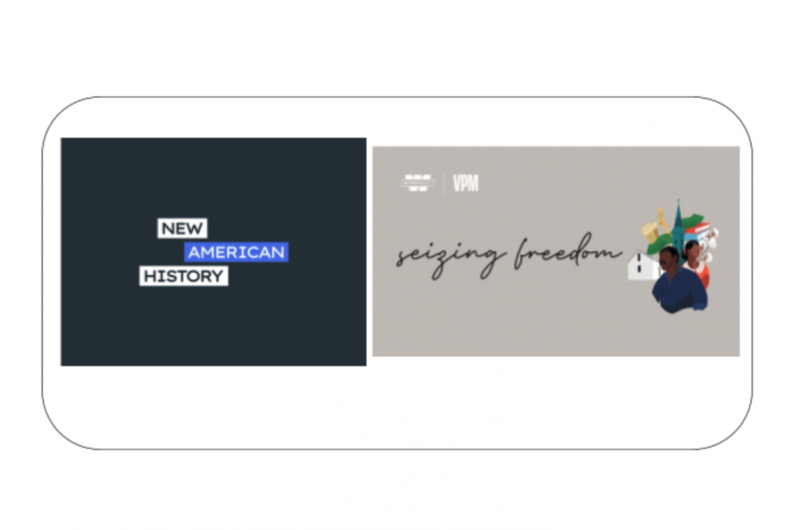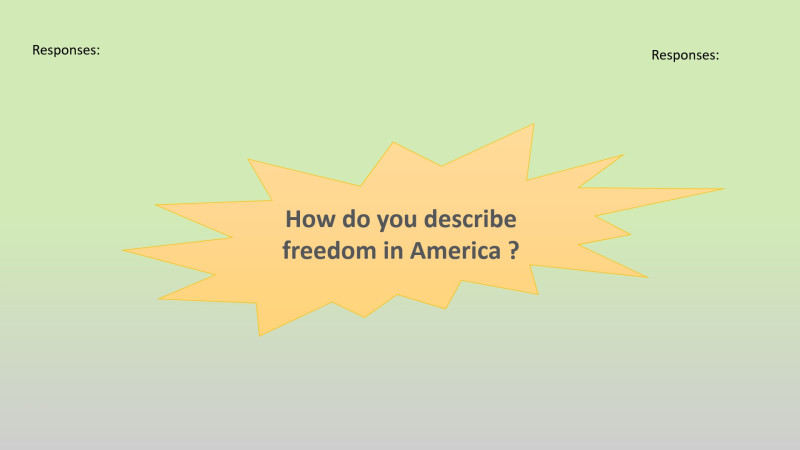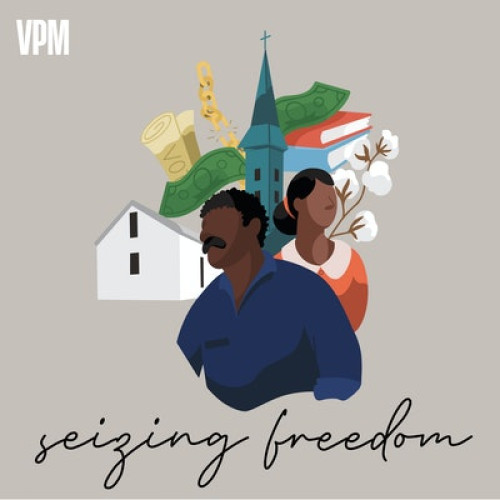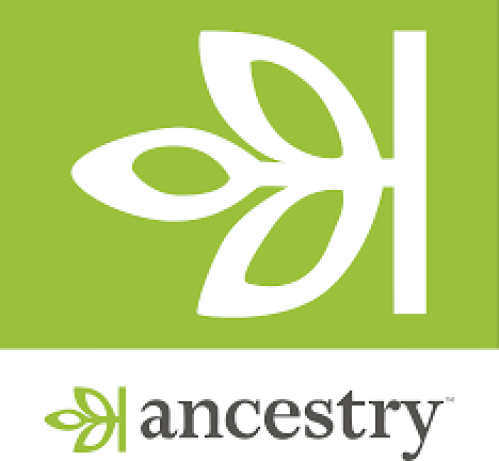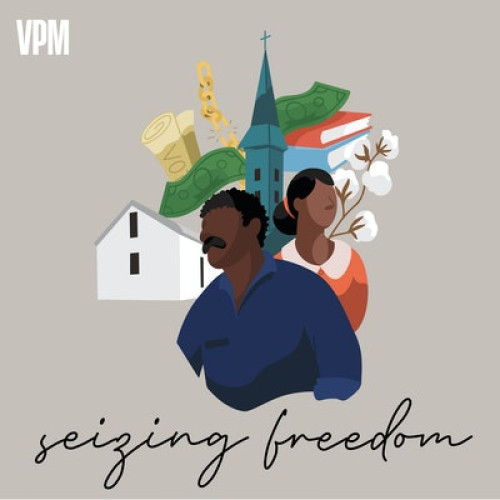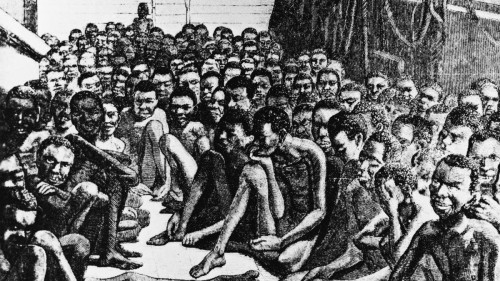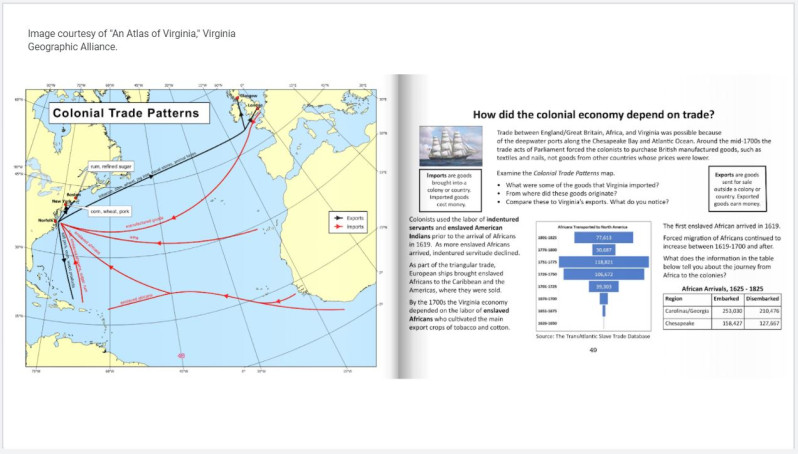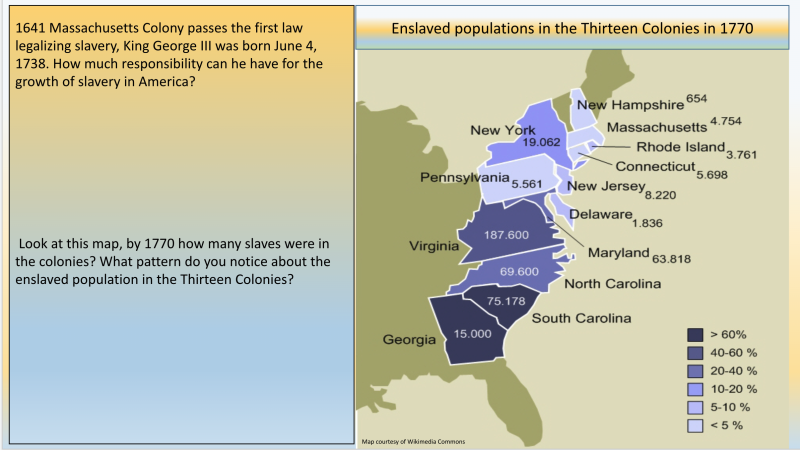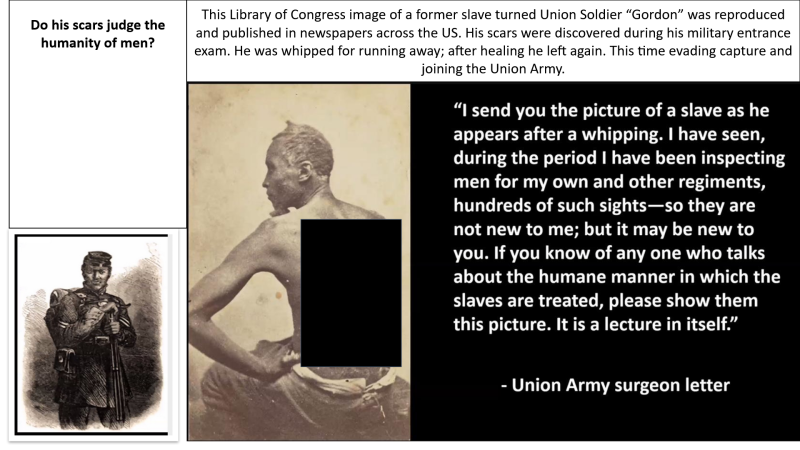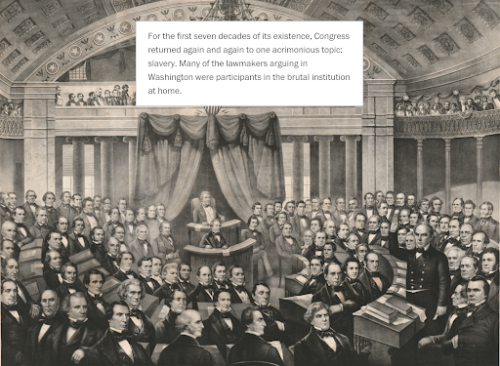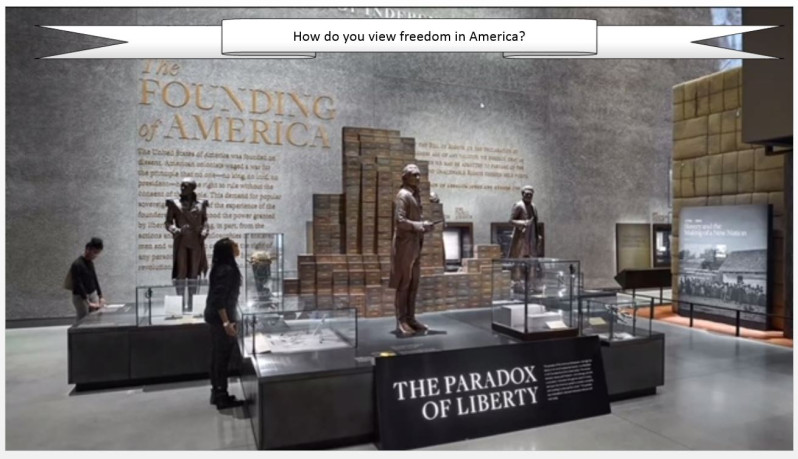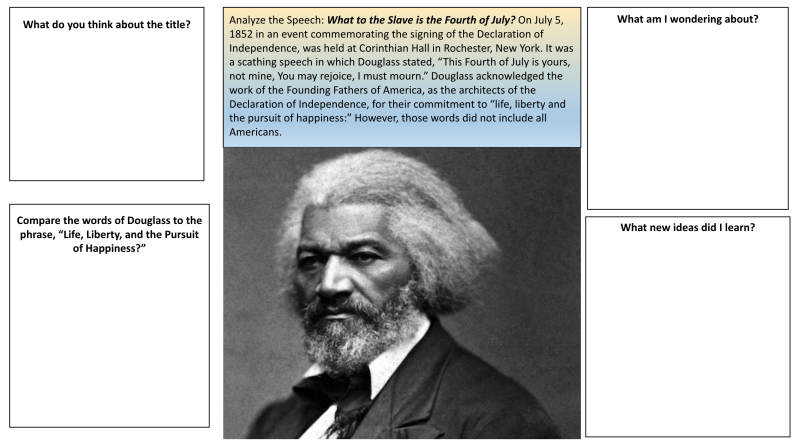This work by New American History is licensed under a Attribution-NonCommercial-ShareAlike 4.0 (CC BY-NC-SA 4.0) International License. Permissions beyond the scope of this license may be available at newamericanhistory.org.
Seizing Freedom: The Deleted Passage from the Declaration of Independence
View Student Version
Standards
C3 Framework:D2.Civ.3.6-8. Examine the origins, purposes, and impact of constitutions, laws, treaties, and international agreements.D2.His.1.6-8. Analyze connections among events and developments in broader historical contexts.D2.His.16.6-8. Organize applicable evidence into a coherent argument about the past.
National Council for Social Studies:Theme: Power, Authority, and GovernanceTheme: Civic Ideals and Practice
National Geography Standards: Standard 17: How to apply geography to interpret the past
Teacher Tip: Think about what students should be able to KNOW, UNDERSTAND and DO at the conclusion of this learning experience. A brief exit pass or other formative assessment may be used to assess student understandings. Setting specific learning targets for the appropriate grade level and content area will increase student success.
Suggested Grade Levels: Middle School (6-8) / High School (9-12)
Suggested Timeframe: 2 Day 45-minute lesson
Suggested Materials: Internet access via laptop, tablet, or mobile device
Key Vocabulary
Chattel slavery - the enslaving and owning of human beings and their offspring as property, able to be bought, sold, and forced to work without wages
Declaration of Independence - a document outlining the colonists’ grievances with King George III of England, primarily authored by Thomas Jefferson. Signed by representatives from each colony, it reflected their quest for independence from Great Britain.
Delete - remove or take away from view
Enslaver - someone who owns another person taken against their will, or born to an enslaved person, and views them as chattel property
Forced Migration - -forcible removal from a place of origin. The trans-Atlantic slave trade was the largest forced migration in history, relocating some 50 ethnic and linguistic groups.
Human trafficking - the forcible transportation of people for labor
Incentive - the reason or motivation for doing something
Inhumane - especially cruel
Liberty - a person’s freedom
Middle Passage - a transportation route across the Atlantic Ocean that supplied kidnapped and enslaved people to the North and South American colonies.
Rendition - performance or interpretation of a piece of music, a poem, a story or song, based on a primary source
Read for Understanding
Teacher Tips:
This Learning Resource includes language in the body of the text to help adapt to a variety of educational settings, including remote learning environments, face-to-face instruction, and blended learning. If you are teaching remotely, consider using videoconferencing to provide opportunities for students to work in partners or small groups. Digital tools such as Google Docs or Google Slides may also be used for collaboration. Rewordify helps make a complex text more accessible for those reading at a lower Lexile level while still providing a greater depth of knowledge. This Learning Resource was developed in collaboration with VPM/Witness Docs from Stitcher, co-producers of the Seizing Freedom podcast. In the resource, this lesson has an editable Google Slides template. Note that in the lesson, the Gordon image contains graphic scarring on the back of a runaway enslaved man, teachers should review for students who may not be mature. There will be a black box covering the disturbing part of the image which you may remove if you choose.
This Learning Resource uses a “Thinking Routine” from Project Zero, a research center at the Harvard Graduate School of Education that has developed learning strategies that encourage students to add complexity to their thought process. For an overview of Project Zero’s methodology, you may want to read its Exploring Complexity Bundle. Specifically for this lesson, students will use the See, Think, Wonder thinking routine. This Learning Resource also features Bunk Collections, which are groups of Bunk excerpts that share a common topic or theme.
This Learning Resource follows a variation of the 5Es instructional model, and each section may be taught as a separate learning experience, or as part of a sequence of learning experiences. We provide each of our Learning Resources in multiple formats, including web-based and as an editable Google Doc for educators to teach and adapt selected learning experiences as they best suit the needs of your students and local curriculum. You may also wish to embed or remix them into a playlist for students working remotely or independently.
This Learning Resource provides a view-only copy of images to your students using a collaborative tool, a Google Slide deck. You will need to make a master copy of the slides for your personal Google Drive. For instruction, make separate copies of your master copy to use with your students, and set permissions to “anyone may edit.” You may also use the Google Slides to make further modifications as needed.
For Students:
Building empathy and understanding as a Learner.
These learning resources include audio segments from the VPM podcast, Seizing Freedom, and include content about the history of slavery and the forced migration of enslaved Africans to the United States during the colonial era.
This era of American History will be challenging yet informative for you as a student to read, hear and reflect upon as you continue on your educational journey, including learning about sensitive topics in our nation’s history. Your community should be partners and included in supporting your learning about history, alongside your classmates and teachers.
Engage
What does freedom in America look like?
In this learning resource, you will explore ideas about what freedom means in American history, both past, and present. You will make a copy of the Google Slides provided by your teacher. You may practice using the boxes in the slides to respond to questions and share your ideas. If permitted, you may work in a small group, or if working remotely, your teacher may provide access to a breakout room via videoconferencing.
On slide two you will use the boxes in the slides to respond to the question, describing what Freedom in America means to you.
- Does everyone in America share the same freedom?
- Is freedom a right of all citizens?
- Can freedom be taken away, and under what circumstances?
In school, we are often taught the phrase from Patrick Henry’s famous speech, “Give me liberty or give me death.” Does this quote influence your ideas about the importance of freedom?
- Does this quote and its meaning apply to everyone?
- Did it apply to only the colonial landowners and planters seeking their freedom from Great Britain?
- If an enslaved person asked for “liberty or death,” which do you imagine they would have received? Explain your answer.
Listen to this segment from the Seizing Freedom podcast, a narrative from “A Bedrock For Freedom.” You will hear recordings of primary sources from enslaved people seizing freedom, as read by voice actors.
After listening to the segment, view this advertisement from Ancestry.com, then use slide three to view an image, and answer the questions that correspond with the image.
- What does this image say about our country today? For all?
- Do you think this multi-racial image of descendants of the signers of the Declaration of Independence is what the Founders had in mind?
- Think about the words in the audio, does the description of freedom connect with the vision of the Founders?
- After hearing the audio segment and viewing the image, define liberty.
Your teacher may ask you to record your answers on the graphic organizer as an exit ticket, or if working remotely, using a collaborative document such as a Google Doc or Google Slides.
Explore:
What did Thomas Jefferson hope to accomplish in adding the passage on slavery to his first draft of the Declaration of Independence?
On slide four you will be introduced to the primary source known as the “deleted passage” from the original draft of the Declaration of Independence. In 1776, the colonists were drafting this document to express their displeasure with King George III.
The primary author of the Declaration of Independence, Thomas Jefferson, included a passage attacking slavery in an earlier draft of the Declaration of Independence. Read the passage and in this section you will analyze its historical context.
The above image is the official presidential portrait of Thomas Jefferson. Jefferson’s original draft included the passage on slavery. The passage was later deleted, and Jefferson stated the main reason was the opposition from northern delegates to the Second Continental Congress and southern delegates from Georgia and South Carolina. Although slaves were not abundant in the North, Northerners profited from the slave trade through banking, shipbuilding, and trade networks. Explore this timeline to learn more about slavery in the American colonies.
Consider the following:
- Who is Thomas Jefferson’s audience?
- What does he ask for in relation to owning enslaved people as property?
- What was his purpose for adding the passage on slavery?
- Why do you think the passage was later deleted from the original draft of the text?
- What do you think the Founders meant by liberty?
Listen to this segment from the Seizing Freedom podcast, a narrative from The Final Word on Liberty. You will compare the idea of freedom expressed in the podcast segment to the words of Thomas Jefferson’s phrase, “Life, Liberty and the Pursuit of Happiness,” written in the Declaration of Independence. Frederick Douglass acknowledged the Founders’ words, but do they connect to all persons who were living in the colonies in July of 1776?
Analyze the text of the deleted passage again:
“He has waged cruel war against human nature itself, violating its most sacred rights of life and liberty in the persons of a distant people who never offended him, captivating & carrying them into slavery in another hemisphere or to incur miserable death in their transportation thither. This piratical warfare, the opprobrium of infidel powers, is the warfare of the Christian King of Great Britain. Determined to keep open a market where Men should be bought & sold, he has prostituted his negative for suppressing every legislative attempt to prohibit or restrain this execrable commerce. And that this assemblage of horrors might want no fact of distinguished die, he is now exciting those very people to rise in arms among us, and to purchase that liberty of which he has deprived them, by murdering the people on whom he has obtrude them: thus paying off former crimes committed against the Liberties of one people, with crimes which he urges them to commit against the lives of another.”
- Does Jefferson’s passage, as written above, make the case for ending slavery?
- What do you now think was Jefferson’s purpose in including the “deleted passage” in his earlier draft of the Declaration of Independence?
- How do you know?
Your teacher may ask you to record your answers on the graphic organizer as an exit ticket, or if working remotely, using a collaborative document such as a Google Doc.
Explain:
How much did the colonial economy depend on trade?
Why do you think the colonies legalized the use of slave labor? Kidnapping and enslaving people was driven by the desire for free or inexpensive laborers. In the link below, you will explore the treacherous journey endured by the enslaved leaving the African coast toward the Caribbean islands, the English colonies in North America, and the Spanish colonies in South America. The Europeans used a trade route called the Middle Passage. View the Middle Passage voyage of the enslaved from Life on a Slave Ship, Explore the site to learn more about the inhumane conditions endured during the forced migration of the African people, and the gruesome acts involved in the enslavement process.
Slide five includes a page from the Virginia Geographic Alliance’s An Atlas of Virginia that includes a map of Colonial Trade Patterns. It explains the incentive of the planters/colonists to continue the institution of slavery for profit in North America. The forced migration of African slaves continued to grow into the next century. Study the map, graphs, and chart along with the text.
- According to the map, what major cities were involved in the slave trade?
- Where were the British trading slaves?
- Why did Virginia depend on the triangle trading practice?
Slide six illustrates the trade patterns within the colonies and explains why their economies depended on the enslavement of others. The practice of human trafficking began centuries before King George III was born. To gain further insight into the slave trade from the British perspective, take a few minutes to explore this entry from the National Archives in the United Kingdom.
Study the map and respond to the questions on slide six.
Turn and talk to an elbow partner, or if working remotely your teacher may allow you to respond in Google Slides or a Google Doc, or via the chat feature in a videoconferencing breakout room.
- Does the need for labor justify kidnapping and enslaving people?
- By 1770, how many colonies used enslaved labor?
- Which colonies had the largest enslaved populations?
Slide seven illustrates the brutality suffered by those enslaved by the colonists. The image, as printed in the newspapers during this time period, is graphic. You and your teacher may discuss how comfortable you are viewing it in class.
Documented by a Union Army surgeon, the back of a runaway enslaved man named Gordon was published in newspapers around the country. He received these scars from a beating after he was returned to his enslaver for seeking freedom. Soon after healing, he ran away again, this time joining the Union Army.
Read the quote from the Union Army surgeon, focusing your thoughts on the words, “they are not new to me.”
- Does “life, liberty, and the pursuit of happiness” apply to this man?
- What was the physician’s purpose in sharing this image?
- What do you think he meant when he wrote: “It is a lecture in itself”?
- To what audience was this directed?
Your teacher may ask you to record your answers on the graphic organizer as an exit ticket, or if working remotely, using a collaborative document such as a Google Doc.
Elaborate:
How many United States presidents and members of Congress owned slaves?
In January of 2022, The Washington Post released a database of members of Congress who were also slaveholders. Take a few minutes to explore this database.
On slide eight, you will examine the graph of the United States presidents who owned enslaved Africans.
- What do you notice?
- What did you find surprising?
- How willing do you think these men were to end the institution of chattel slavery in the United States?
- Did their presidential decisions include the enslaved?
The graph shows that Thomas Jefferson, the primary author of the Declaration of Independence, owned up to 600 humans. Some of these were purchased, others inherited. It has also been documented Jefferson fathered 6 children with one of the young enslaved women he owned, Sally Hemings, After viewing this graph, reflect on what you have learned about Thomas Jefferson. Share your thoughts on slide eight.
The Smithsonian’s National Museum of African American History and Culture has an exhibit dedicated to Jefferson's “Paradox of Liberty,” in which each brick represents a slave owned by him. This would include a brick for the six children he fathered with Sally Hemings, and one for their enslaved mother. Do you think his words matched his actions?
For slide nine, you will once again answer the following questions:
- How do you view freedom in America?
- Has your thinking about this question changed as you completed other activities in these learning resources? Explain your answer.
The image on the slide is the museum exhibit at the National Museum of African American History and Culture entitled “The Paradox of Liberty.” This exhibit is also available online as part of the Smithsonian’s Searchable Museum website.
The Thomas Jefferson Foundation owns Jefferson’s historic home, Monticello, and has a separate online exhibit with the same title, The Paradox of Liberty, dedicated to this same topic. Explore both exhibits to see how each one tells this complicated story.
Your teacher may ask you to record your answers to the questions on the graphic organizer as an exit ticket, or if working remotely, using a collaborative document such as a Google Doc.
Extend:
Does Independence Day mean the same thing to all Americans?
On July 4th, 1776, hundreds of thousands of African American people remained enslaved in the 13 colonies. Do you imagine the enslaved celebrated after the Declaration of Independence was signed?
On slide ten you will analyze the words of a formerly enslaved man, Frederick Douglass, who gave a speech often referred to as, “What to the slave is the 4th of July?”
- Do they both speak of true freedom yearned for by all people?
- Did the Founders meet the needs of all of the people in this country, or a chosen few?
You can answer the questions on the slide. Compare his speech with the words of the formerly enslaved in the Seizing Freedom narrations. Complete the questions in each of the squares on the slide.
- What do you think about the title?
- Compare the words of Douglass to the phrase, “Life, liberty and the pursuit of happiness.”
- What are you wondering about?
- What new ideas did you learn?
On slide eleven, you will see images from the National Park Service site, Voices from the Middle Passage. The images show a cargo ship carrying captive persons. The Middle Passage was the trans-Atlantic journey of captive persons for the purpose of enslavement. Examine the images to see the conditions endured by the captive persons.
When examining the images, think about the families and culture the captive persons were leaving behind.
- Do the captive persons have enough room?
- Do the images show a willingness to come and work for free in a new world?
- Do you see any standing room?
- Can you imagine the sanitary conditions on this vessel?
Memorial to the Middle Passage:
More than 12.5 million people were forced away from their culture and homes to be enslaved in the New World. This underwater memorial has been interpreted by some to symbolize those lives lost to the water, including slaves thrown overboard or those who intentionally drowned themselves to avoid enslavement. The artist’s original intent in creating the piece was not to make this connection, but later the artist acknowledged it was important for those who viewed this work to come to their own conclusions. Take a few minutes to explore the artist’s site and view the images.
- What do you notice?
- What does it make you think about or wonder?
- What type of monument might you create to honor the enslaved?
On slide twelve how would you describe freedom for all in the United States?
Analyze the images on slide twelve. Each picture illustrates examples of Americans fighting for freedom. Answer the following questions:
- How would you describe freedom, as it applies to all Americans in the United States?
Your teacher may ask you to record your answers on the graphic organizer as an exit ticket, or if working remotely, using a collaborative document such as a Google Doc.
Citations:
Black Past “The Deleted Passage of the Declaration of Independence, 1776.” Accessed July 5, 2021 https://www.blackpast.org/african-american-history/declaration-independence-and-debate-over-slavery/
Black Past “Frederick Douglass Speech 1852, What to the Slave is the Fourth of July.” Accessed July 5, 2021 https://www.blackpast.org/african-american-history/speeches-african-american-history/1852-frederick-douglass-what-slave-fourth-july/
Davide Carozza, “Jason de Caires Taylor, “Vicissitudes”, Deeps, The Black Atlantic, Duke University, Accessed July 17, 2021 http://sites.duke.edu/blackatlantic/
Encyclopedia of Virginia. “Slave Ships and the Middle Passage.” Accessed June 19, 2021https://encyclopediavirginia.org/entries/slave-ships-and-the-middle-passage/Thomas Jefferson’s Monticello: Jefferson Quotes and Family Letters. “Extracted from Thomas Jefferson’s Notes on the state of Virginia.” Accessed June 20, 2021https://tjrs.monticello.org/letter/1314
Thomas Jefferson’s Monticello: “Paradox of Liberty.” Accessed June 20, 2021https://www.monticello.org/paradox/
Thomas Jefferson’s Monticello: Thomas and Slavery “Thomas Jefferson and Sally Hemings: A Brief Account.” Accessed June 20, 2021https://www.monticello.org/thomas-jefferson/jefferson-slavery/thomas-jefferson-and-sally-hemings-a-brief-account/
Seizing Freedom “The Bedrock of Freedom”. Accessed July 10, 2021https://seizingfreedom.vpm.org/
Seizing Freedom “The Final Word on Liberty”. Accessed July 10, 2021https://seizingfreedom.vpm.org/ Washington Post
Seizing Freedom Credits
Seizing Freedom is a co-production of VPM and Witness Docs from Stitcher. Host: Dr. Kidada WilliamsLead Producer/Writer: Joshua MooreLead Editor: Kelly JonesAssociate Producer: Ronald Young, Jr.Interview Producer: Lushik WahbaSound Designer: Jakob Lewis & Cariad Harmon of Great Feeling StudiosComposer: Dan Burns (Additional Music from Blue Dot Sessions)Project Manager/Editor: Gavin WrightExecutive Producer: Ed AyersVoice Actors: Andre Giles, Andrew Robinson, Candice Holley, Chiquita Melvin, Conrad Haynes, Constance Swain, Dale Leopold, Dave Gau, Eric Holloway, Fiona Soul, Frank Harrison Jr., Gavin Wright, James J. Johnson, Jefferson A. Russell, Joshua Moore, June Jones, Justin G. Reid, Louis Hampton, Marcia Baker, Ozzie Wilson, Paul Schmidt, Peter Jacobs, Rachel Dilliplane, Richelle Claiborne, Ronald Young Jr., Sierra Doss, Terry Menefee Gau, Tim Jenkins, William Barnett, Xavier Taylor, Yvette Carmen
View this Learning Resource as a Google Doc:


